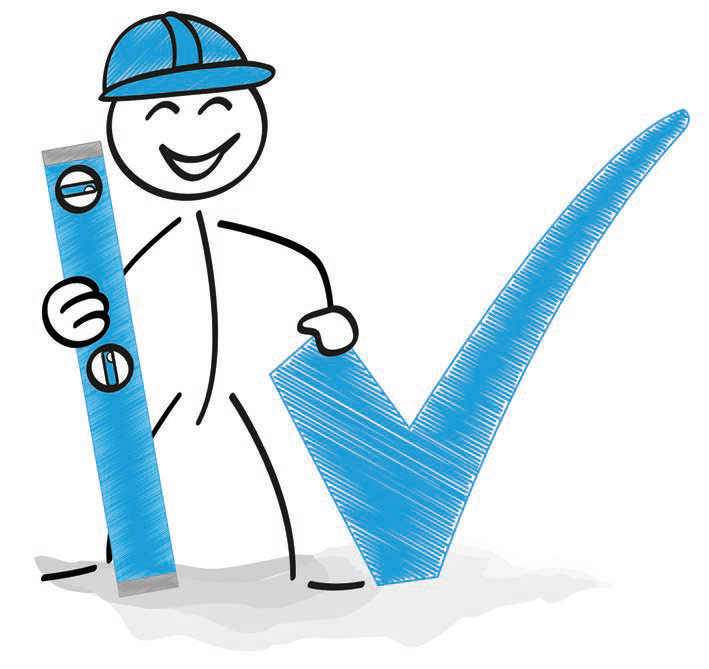Landscape cost estimating specialist, Colm Kenny explores the rarely discussed domain of landscape customer service and shares some expert insight on best practice
As the general economy has improved over the last number of months, hopefully, all established landscape contractors are finding themselves busier than they have been over the last few years, with more enquiries coming in and a higher rate of conversion of these enquiries into actual projects. Though this level of increased activity is welcome, in order to ensure that small to medium sized landscape contractors remain sustainable in the long term, each business owner must ensure that all aspects of the business are undertaken to the highest standard possible, with 100% client satisfaction being the ultimate goal.
No fancy research methods are needed to prove to all in the landscape industry that one happy customer could potentially lead to another 10, and these 10 could lead to another 10, and so on. This powerful ripple effect of past customer referrals is not just confined to domestic clients telling their families and friends, professional people do talk to each other too. In fact, landscape architects, designers and other professionals in the wider construction will have a higher referral rate as they are dealing with other industry professionals on a daily basis. A large number of my friends are in different sectors of the industry and I wouldn’t hesitate to contact them if I needed a reference for a contractor I had not worked with before, and likewise, they would contact me to do the same.
It goes without saying that each contractor should strive for a 100% satisfaction for the actual physical works and the end product of a landscape contract. It’s often the bit in between and the flow of stages from the initial contact to the end product where many contractors fall short and fail to impress their clients. With the constant emphasis on customer service, I’m sure a lot of us can recall unsatisfactory experiences with businesses, both within and outside the landscape industry, where an appropriate sense of urgency doesn’t exist. One area that seems to stand out is responding to initial customer enquiries. When a prospective client takes the time to contact a business they are looking for some type of assistance. Due to the nature of the business, it often involves you calling out to look at the project on site.
Unfortunately, most businesses do a mediocre job, at best, of responding to customers in a timely manner. I am aware that the majority of landscaper contractors don’t have the luxury of having a full-time office based secretary who will look after the phone and organise a staff member to go and visit the potential client. It is often a mobile number that is on the company website and when the only number a potential client has to contact you rings, it’s either sitting in the van away from you or you don’t answer it as you don’t recognise the number or there is a panic on to get out of a job. If you do answer it, you may not be in a position to record the details correctly. Either way, the majority of initial enquiries are not dealt with correctly.
The initial contact is important as it is often from this brief conversation that you make a judgment on the level of interest in their potential project. What sort of job is it? Where are they based? Are their expectations realistic? If you think the job is one that wouldn’t suit you, politely tell them that you are unavailable but to keep you in mind for the next time. Don’t give them an empty promise of calling to see them, references can be generated from people you never met. Remember also, the client will be making a judgment too, on you. Once a client has contacted you and you are interested, don’t delay in paying them a visit in person. Certainly, don’t let it go more than a week without arranging an appointment. Any longer and a potential client will go back to Google, ringing the next firm on the list, and that list seems to me to be endless.
The initial site visit is important too as potential clients meet you in person for the first time, and as my mother has always told me ‘first impressions last’. I know from my own experience that the majority of these site visits occur when the homeowners have arrived home from their day’s work. You too have been working on the job all day and the last thing you want to do is spend time away from your family, hobbies, or Coronation Street, travelling to and from client’s houses and talking to them about their project and how little money they have to spend on it. However, this time needs to be invested, at your own expense, in order to get the next job so that your company can continue to grow and stay in business.
When you are putting in the effort to visit a potential client, get the most out of your time on site. Take measurements and photos, making sure you record all measurements. It wouldn’t be a good advertisement for your business if you have to return to double check measurements. Listen to the client’s brief to ensure you understand their requirements, asking questions to ensure you comprehend what they are asking of you. Give the potential client an indication of when you will be back in touch with their quotation or design, or both. Be practical and realistic in the length of time it will take you to sit down and put together a proposal. Again, a week is a good benchmark to try and aim for. If it slips past a week, contact them to let them know that you’re working on it and will be back as soon as possible.
Everyone has their own way and technique of presenting their quotation. Some people give the full breakdown of the works line by line, while others give little detail and a figure at the end. My own preference is to present the quotation like a Bill of Quantities. This way everybody knows the exact cost of all elements. The detailed descriptions ensure that any changes to the proposal can be done easily with the knowledge of what impact they will have upon the overall figure. Also, giving enough information leads to lower numbers of disputes once the job starts on site.
Getting a job over the line, especially one for a private domestic client, is often assisted with supplementary information that can convince clients to hire you. A company profile, mission statement, past project images and details along with previous client references can all improve your company’s professional image. If needs are, meet with them face to face and talk them through the quotation answering any questions they may have. It will also present an opportunity to talk them through past projects, tell them your qualifications and let them see that you are capable of undertaking the project to a high standard.
Successful completion of quality audits such as ISO 9001 and participation in Bord Bia Quality programmes give added weight to your status among both industry professionals and domestic clients. Also being a member of relevant trade bodies such as the Association Of Landscape Contractors of Ireland (ALCI) can be the deciding factor in winning a competitive tender, especially if the tender is awarded on careful analysis of the most economically advantageous tender, where not just the price is considered but also where previous project history is examined along with a company’s resources, experience of management and the like.
Ross Carew, Executive Secretary of the ALCI, is finding an increase in awareness of the association both among the private clients and amongst other trade bodies, and comments: “As awareness of the ALCI and what it stands for has grown in recent years, our members increasingly report that ALCI membership helps to differentiate them from other landscape contractors and is a recognised endorsement of their quality workmanship and commitment to high standards. Being an ALCI member is a significant advantage when it comes to competing for landscaping contracts, be they in the private, commercial or public authority sectors”.
Any company that has survived the last number of years and is still in business must have a high satisfaction rate with their clients’. While there is an increased demand for work, competition remains high between contractors. The quality of workmanship is constantly improving to deal with clients’ higher expectations. Companies who wish to grow and continue to expand need to up their game, particularly with off-site activities to give clients a better customer experience. While the finished job is the one that will be shown to family and friends, an excellent customer experience will generate positive ripples which will lead to more jobs on the ground. ✽
NINE TOP WAYS TO BUILD SOLID CUSTOMER RELATIONS
|









